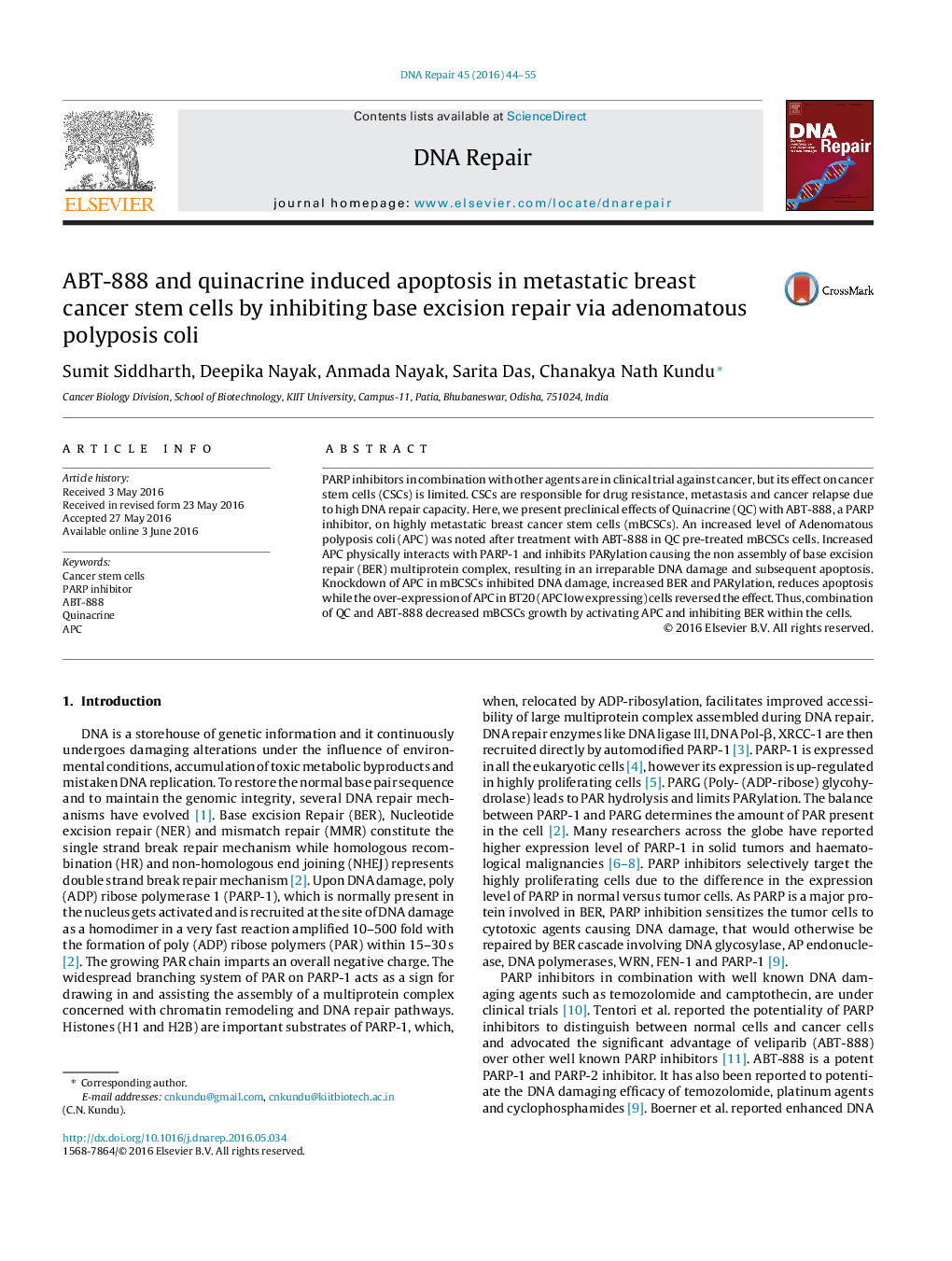| Article ID | Journal | Published Year | Pages | File Type |
|---|---|---|---|---|
| 1979948 | DNA Repair | 2016 | 12 Pages |
•ABT-888 increased QC mediated DNA damage-induced APC.•Induced APC inhibits PARP1(PAR)ylation and disassemble BER complex.•QC + ABT-888 caused irreparable DNA damage and induced apoptosis in mBCSCs.
PARP inhibitors in combination with other agents are in clinical trial against cancer, but its effect on cancer stem cells (CSCs) is limited. CSCs are responsible for drug resistance, metastasis and cancer relapse due to high DNA repair capacity. Here, we present preclinical effects of Quinacrine (QC) with ABT-888, a PARP inhibitor, on highly metastatic breast cancer stem cells (mBCSCs). An increased level of Adenomatous polyposis coli (APC) was noted after treatment with ABT-888 in QC pre-treated mBCSCs cells. Increased APC physically interacts with PARP-1 and inhibits PARylation causing the non assembly of base excision repair (BER) multiprotein complex, resulting in an irreparable DNA damage and subsequent apoptosis. Knockdown of APC in mBCSCs inhibited DNA damage, increased BER and PARylation, reduces apoptosis while the over-expression of APC in BT20 (APC low expressing) cells reversed the effect. Thus, combination of QC and ABT-888 decreased mBCSCs growth by activating APC and inhibiting BER within the cells.
Graphical abstractFigure optionsDownload full-size imageDownload high-quality image (91 K)Download as PowerPoint slide
